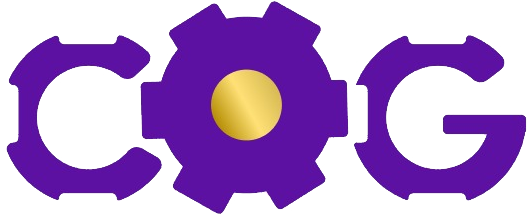Welcome to our exploration of the modern workspace, where the traditional in-office model is being challenged by the growing trend of remote work. As we navigate through these changing times, it’s crucial to understand how each work environment impacts two key aspects of the professional world: productivity and employee satisfaction. In this blog, we’ll dive deep into the pros and cons of both scenarios, aiming to shed light on which might offer the best balance for work-life harmony. Whether you’re a team leader, an HR professional, or just curious about the future of work, you’re in the right place to discover more about these dynamic work models.
Remote Work Model
Definition of remote work
Remote work, also known as telecommuting, is a flexible working arrangement that allows employees to work from any location outside of a traditional office environment. This could be from their homes, a co-working space, or even a café—anywhere that’s not a conventional office setup. The main idea behind remote work is to use technology to bridge the physical gap between the worker and the workplace, enabling tasks to be completed and goals to be achieved without the need for physical presence in an office.
Benefits of remote work
Remote work offers a plethora of advantages that contribute to both employee satisfaction and productivity. Firstly, it significantly reduces commute times, allowing employees to dedicate more time to personal activities or rest, thus improving their work-life balance. Secondly, employees have the flexibility to create a workspace that suits their personal preferences, which can lead to increased comfort and, consequently, productivity. Remote work also opens up opportunities for people to work for companies without the need to relocate, providing businesses access to a broader talent pool. Furthermore, many find that remote work leads to fewer distractions than in an office environment, allowing for deeper focus and efficiency in tasks.
Challenges of remote work
Despite its benefits, remote work isn’t without its challenges. Key among these is the sense of isolation some employees may feel, being physically disconnected from their team. This can impact team cohesion and sometimes even employee mental health. Another significant challenge is the blurring of work-life boundaries, where employees find it difficult to “switch off” from work, leading to potential burnout. Additionally, while technology facilitates remote work, it also brings about challenges in communication and collaboration, requiring both employees and employers to be more proactive and deliberate in their interaction efforts.
Traditional In-Office Model
Description of traditional in-office model
The traditional in-office model involves employees working from a physical office location, typically during set working hours. This model has long been the standard for most businesses around the world. It’s based on the idea that employees work best when they are in a dedicated work environment, surrounded by their colleagues, and have direct access to their managers and company resources.
Advantages of in-office work
One of the primary advantages of the in-office model is the ease of collaboration. Being in the same physical space makes it easier for team members to communicate, share ideas, and solve problems together. It also fosters a sense of community and belonging among employees, contributing to team cohesion and company culture. Another benefit is the clear separation between work and personal life, which can help employees maintain better work-life balance. Furthermore, having immediate access to managerial support and resources can accelerate decision-making processes and enhance productivity.
Disadvantages of in-office work
However, the in-office model is not without its downsides. Commute times can significantly impact employees’ work-life balance, taking away from personal time and potentially leading to increased stress. Working in a physical office can also result in more distractions, from the ambient noise of a busy office to the interruptions by colleagues. Moreover, this model limits the talent pool to those who live in the vicinity of the office or are willing to relocate, potentially overlooking highly skilled individuals based in different locations.
Impact on Productivity
Factors influencing productivity in remote work
Remote work introduces a unique set of factors that can significantly influence productivity. A key aspect is the flexibility in setting one’s schedule, which allows employees to work at their peak hours of concentration and efficiency. The reduction in commuting time is another significant factor, granting employees more hours in the day to dedicate to work or rest, thus potentially increasing productivity. However, remote work also presents challenges such as distractions at home, difficulty in separating work from personal life, and sometimes, overworking due to the absence of clear work-time boundaries. Additionally, the lack of immediate access to colleagues for problem-solving can delay progress on projects.
Factors influencing productivity in the in-office model
In contrast, the in-office model fosters a structured environment where employees have set work hours and physical separation from home life, which can enhance focus and discipline. The immediate presence of colleagues and supervisors can facilitate quicker problem-solving and decision-making, boosting productivity. However, the office environment can also bring drawbacks, including lengthy commutes that can lead to employee fatigue, office politics, which may distract and demotivate, and potentially inefficient use of time in meetings or due to interruptions.
Comparison of productivity levels between remote work and in-office model
Comparing productivity levels between remote work and the in-office model yields mixed results, often depending on the individual’s role within the company, the company’s culture, and the industry. Studies have shown that remote work can lead to higher productivity due to increased autonomy and fewer interruptions. Yet, for others, the structured environment of an office and the proximity to colleagues can result in more efficient work. The key appears to be finding the right balance that suits the nature of the work and the individual’s preferences and strengths.
Impact on Employee Satisfaction
Factors affecting employee satisfaction in remote work
Employee satisfaction in remote work can be significantly higher due to several factors. Flexibility in work hours and environment allows employees to create a work-life balance that suits their personal needs, leading to greater job satisfaction. The elimination of commuting not only saves time and money but also reduces stress levels, enhancing overall well-being. However, remote work can also lead to feelings of isolation and disconnection from the team, and for some, this outweighs the benefits, affecting their overall satisfaction negatively.
Factors affecting employee satisfaction in the in-office model
In the in-office model, factors boosting employee satisfaction include the sense of community and belonging that comes from working alongside colleagues, along with the structured routines that some find stabilizing. Office perks, such as free lunches, gym memberships, and social events, also contribute positively. Nonetheless, the compulsory commute and the lack of flexibility can diminish satisfaction, as these aspects negatively impact employees’ perceived work-life balance.
Comparison of employee satisfaction levels between remote work and in-office model
Employee satisfaction levels between remote work and the in-office model reveal that satisfaction is heavily dependent on personal preferences, job requirements, and company culture. While some employees thrive in the collaborative and social atmosphere of an office, others prefer the autonomy and flexibility of remote work. Overall, offering a hybrid model or allowing employees to choose their preferred work style can lead to increased satisfaction across the board, as it caters to a broader range of employee needs and lifestyles, suggesting that the future of work may lie in flexibility and choice.
Work-Life Balance
 Image courtesy: Pexels
Image courtesy: Pexels
The role of remote work in achieving work-life balance
Remote work boasts a significant upside when it comes to balancing our professional and personal lives. The flexibility it offers—whether it’s the ability to start work earlier or later in the day, or the chance to take breaks when needed—allows employees to tailor their work schedules around personal commitments, such as family responsibilities or hobbies. This adaptability can lead to a healthier lifestyle, as employees might find more time to engage in exercise, prepare healthier meals, or simply unwind and enjoy a little more leisure time.
The role of the in-office model in achieving work-life balance
On the flip side, the traditional in-office model creates a clear separation between work and home life. For many, this physical distinction helps in mentally switching off from work-related tasks once they leave the office, arguably making it easier to relax and recharge during off hours. Additionally, in-office work eliminates the potential blurred lines between work and personal life that remote work might induce, ensuring that employees have dedicated time and mental space for their personal lives once they step out of the office.
Comparison of work-life balance between remote work and in-office model
Comparing these two modes of work, it’s clear that both have their unique advantages in achieving work-life balance. Remote work provides unparalleled flexibility, fitting work around personal life seamlessly. Meanwhile, the in-office model offers a structured separation that can be crucial for mental health and well-being. Ultimately, the best approach to work-life balance might vary significantly between individuals, with personal preference, job nature, and individual circumstances playing influential roles in determining the ideal working model.
In the grand tapestry of modern work culture, both remote work and the in-office model weave unique patterns of productivity and employee satisfaction. Remote work champions flexibility and work-life balance, leading to happier employees, yet it challenges team cohesion and consistent productivity. Conversely, the traditional in-office setup fosters a collaborative environment and stable productivity but can strain work-life balance. Ultimately, blending these models might just craft the perfect balance, accommodating diverse work styles and personal needs. Embracing flexibility, therefore, could be the key to unlocking unprecedented levels of productivity and employee satisfaction in the future.











